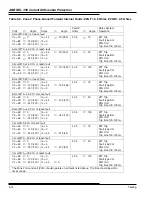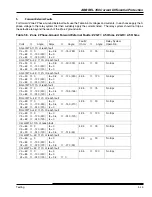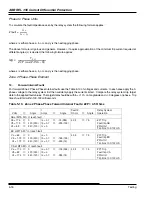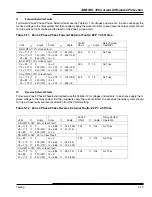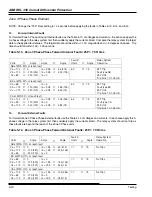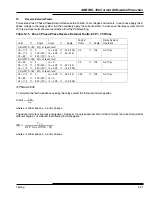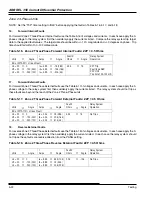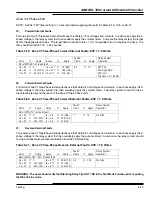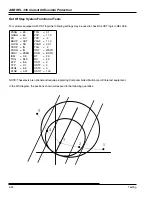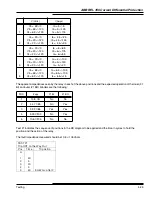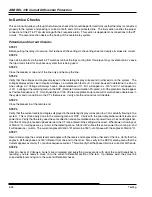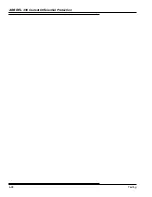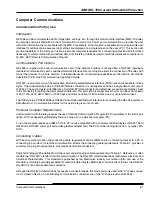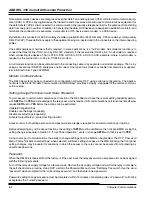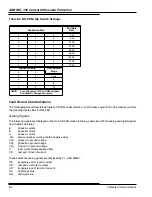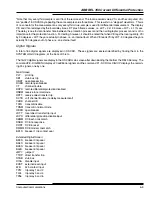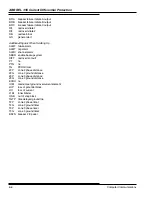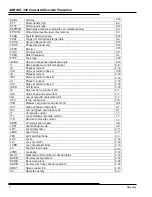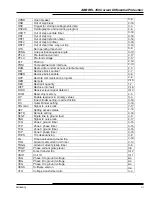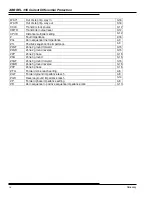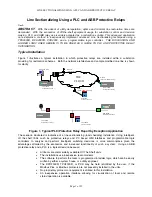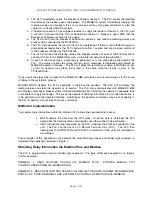
ABB REL 356 Current Differential Protection
5-26
Testing
In-Service Checks
This section will guide you through the In-Service checks that should be performed to insure that the relay is connected
properly to the system and phasing is correct at both ends of the protected line. The first section verifies the proper
connection of the CT & PT circuits along with their respective ratio. This section is dependent on connections to the PT
circuits. The second section deals with phasing of the overall relay system.
Potential and Current Circuits:
STEP 1
Before putting the relay into service, first recheck all the settings to the setting sheet and verify all values are correct.
STEP 2
Open all trip circuits via the built in FT switches or block the trips coming from this relay at any convenient point. Leave
the trip circuits intact for any backup system that is being used.
STEP 3
Close the breaker at one end of the line only and heat up the line.
STEP 4
Verify that the voltages and angles displayed in the metering display correspond to what exists on the system. The
voltages displayed are Line to Neutral voltage so a multiplication factor of 1.73 must be used to determine the Line to
Line voltage. A
Æ
Voltage will always have a phase reference of 0
°
. B
Æ
will appear as -120
°
and C
Æ
will appear as
+120
°
. Looking at the metering menu in the RCP ( Remote Communication Program), all of the potential should appear
as Positive Sequence or V1. Small quantities of V2 & V0 are acceptable and are a result of small phase unbalalnces in
the system and or variations in the PT’s themselves. Verify at both ends and record the data.
STEP 5
Close the breaker in at the remote end.
STEP 6
Verify that the current levels and angles displayed in the metering display correspond to what is actually flowing in the
system. This is more easily done in the metering menu of RCP. Verify with the Load dispatcher current levels and
power flow. Verify that the relay sees the same direction and same relative value of power flow as the Load Dispatcher.
If not the Ct’s may be hooked up backwards or the CT ratio entered in the settings is incorrect. Whenpower is flowing out
of Station “A”, it will appear as (+) watts in the metering menu. Station “B” will see this same power flow coming in, and
it will appear as (-) watts. The current angles at Station “B” wil also be 180
°
out of phase with the angles at Station “A”.
STEP 7
Record and compe the current levels and angles with the levels and angles at the other end of the line. Verify that the
angles in all three phase are 180
°
different from one end to the other. Also verify in the RCP metering menu that the
Current appears as mainly I1 or positive sequence current. This will verify that the phase rotation is correct at both ends.
STEP 8
After all checks of Voltage & Current are completed and everything corresponds with what the Load Dispatcher is
reporting, you are ready to move on to the current differential section of the test. If problems exist, they must be
corrected before moving on to the current differential checks.
Summary of Contents for REL 356
Page 23: ...ABB REL 356 Current Differential Protection 1 10 Product Overview and Specifications ...
Page 83: ...ABB REL 356 Current Differential Protection 3 36 Settings and Application ...
Page 127: ...ABB REL 356 Current Differential Protection 5 28 Testing ...
Page 186: ...LINE SECTIONALIZING USING A PLC AND ABB PROTECTIVE RELAY Page 49 of 53 ...
Page 187: ...LINE SECTIONALIZING USING A PLC AND ABB PROTECTIVE RELAY Page 50 of 53 ...
Page 188: ...LINE SECTIONALIZING USING A PLC AND ABB PROTECTIVE RELAY Page 51 of 53 ...
Page 189: ...LINE SECTIONALIZING USING A PLC AND ABB PROTECTIVE RELAY Page 52 of 53 ...



